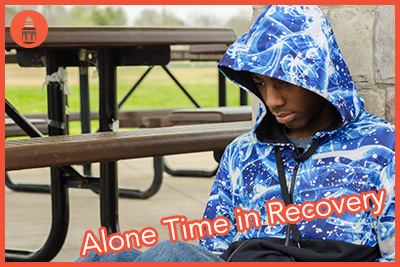
An intervention is an honest moment in your relationship with a loved one who is living with an addiction. You are taking the time to acknowledge that addiction is present and a growing problem, both for your loved one and others in the family. You are recognizing that addiction is a medical disorder that requires treatment, and asking your loved one to agree to get help. In short, it’s both an acknowledgement that certain things are not what they should be at home and an earnest request that those things change for the better going forward.
Here are a few tips to help you stage an intervention for your loved one that will have a positive impact on the entire family, no matter what the specifics of the outcome are:
- Plan it out. Interventions at their best are not impromptu events. Rather, it is recommended that concerned family members meet ahead of the intervention itself with the goal of getting on the same page in terms of the details. From who will take the lead, who will bring the person living in addiction to the event itself, where everyone will park, and who will speak in what order and what will be said, it can help to organize in advance. If everyone knows what to expect and how best to contribute to helping the person agree to get treatment – the primary goal of an intervention – then it will be more likely that everyone will stay on task and help each other to redirect if things begin to go off track.
- Be discreet. It is generally recommended that concerned family members keep their plans for an intervention under wraps until the person enters the room. Why? It is not uncommon for someone living with an addiction to deny that there is a serious problem due to drugs or alcohol and feel defensive when others insist that treatment is necessary. At the intervention, the first order of business is to help the person feel comfortable and understand that no one is judging the behaviors related to addiction – that all recognize that addiction is a medical issue and not a behavioral disorder. It’s important to ensure that the person is present and that may not happen if the event is made public in advance.
- Choose participants carefully. Though there may be a dozen or more people who would like to take part in the intervention, it is a good idea to limit the number of participants to fewer than five, to avoid overwhelming the person with a large group. Additionally, the people chosen should also have a good handle on their emotions and be able to avoid getting angry, judgmental, overly upset, or being rude or argumentative. The person living with addiction should know and respect the people in attendance, and there should be no ongoing “feud” that could steal focus from the cause of helping the person enroll in treatment.
- Consider hiring a professional mediator. A professional mediator can lend an air of objectivity as well as formality to what is essentially a group of family members asking one family member to please get help. A mediator can also answer everyone’s questions and even take the helm when it comes to running the intervention, taking the pressure off family members who may be in crisis due to the chronic nature of their loved one’s addiction.
- Enroll your loved one in a drug rehab. The goal of an intervention is for the person living with addiction to leave for treatment – immediately. Not the following day or in a week or two or when plans can be made, but right away. The idea is to build upon the momentum of the intervention, and the positive focus on healing and recovery, and to help the person transition into treatment before procrastination and excuses that are often characteristic of addiction begin.
- Emphasize that addiction is a medical disorder. It cannot be stated emphatically enough that an intervention is a nonjudgmental process. It is not the person’s fault that addiction is an issue or that treatment is necessary. The behaviors and choices made due to the drive to continually get and stay high or drunk are related to that disorder – not to the individual who is struggling. It is imperative that the offer of treatment is framed as a natural conclusion when someone is living with addiction in order to decrease any defensive feelings that may otherwise block the person from feeling comfortable enough to agree to get help.
- Draw a line in the sand. Another primary aspect of an intervention is making it clear how things will change going forward if the person does not agree to enroll in drug rehab. Refusing to continue to support an active addiction is key to helping the person understand that treatment is the next positive step. For each individual relationship, the specifics will be different, but in general, participants are encouraged to make it clear that they will no longer provide financial support, room and board, or in any way assist the person to continue living in addiction.
- Offer immediate treatment. The time is now. No need to check in with work first or arrange for someone to watch the dog or water the plants. All arrangements should be made in advance of the intervention, and it should be clear to the person that treatment must begin in that moment.
- Don’t back down. No matter what, it is important that participants stand their ground during and after an intervention. Some things are nonnegotiable, and it must be made clear that the addiction disorder is that serious and requires that level of structured response. A life – or perhaps more than one life – is at stake.
- Move forward. Ideally, the person living with addiction will agree to enroll in treatment and leave immediately for rehab, but it is not a “failure” if that person says “no.” It may take the implementation of the promised changes for the person to realize that the issues with drugs and alcohol are indeed serious. They may request help for addiction on their own in the weeks or months following an intervention.



